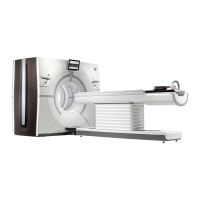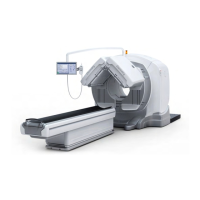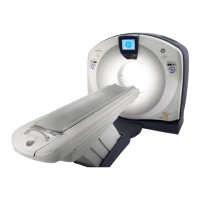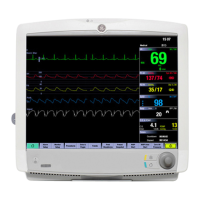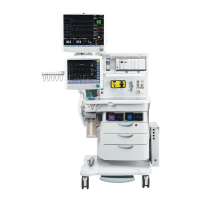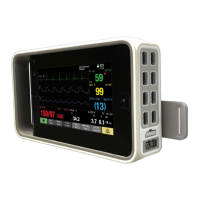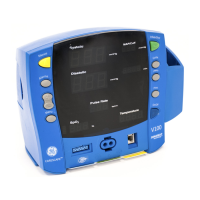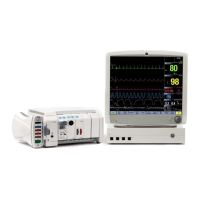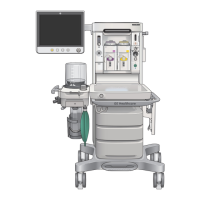GE MEDICAL SYSTEMS CT 9800 QUICK SYSTEM
Rev. 16 Direction 18000
6-9-17
9-6 Tube Output and Detector Channel Check
This check is used to verify tube output as well as normal channel output relative to the reference channels. It is
also useful when comparing reference channel output to verify that there is nothing partially blocking the
outermost reference channels.
This procedure assumes the following items have been verified:
• Plane of Rotation and Beam on Window Alignment.
• Aperture spacing is exact or on the wide side of the specification.
• Detector bias supply is 350 VDC loaded with less than 10 mV P-P ripple.
• The detector has no electrical shorts or opens and pressure is within specification.
• The flex circuit used on the suspected channels is not defective.
• The generator calibration at 80 KVP/40mA is within +
1 KV and + 1 mA.
• The DAS is performing normally.
A channel output test can be performed to check the integrity of the data channels (DAS and detector) using the
same program.
A: Tube Output
The tube should be “cold” for this test; i.e., should have had no more than 25 kilojoules exposure within the last
30 minutes. Verify that there are no objects in the X-Ray field of view to attenuate the beam.
1. Enter CTDS. This should be Default Scan #4 “TUBE OUTPUT”.
• (DC) Select Data Collection
• (3) X-Ray Tube Position
• (180) 180 Degree Tube Position
• (CR)(CR) Down Load Position and Return to Data Collection
• (4) Select Stationary Scan (X-rays on).
• (3) Real Time Statistics
• (D) Default Rotor Speed
• (40) 40 mA
• (80) 80 Kvp
• (5) 5 mm Aperature
• (A) Air Filter
• (500) X-Ray On position
• (2500) X-Ray Off Position
• (500) Trigger On position
• (2000) Number of Triggers (2 second scan)
• (1000) Trigger Frequency
• (1) Offset Corrected
• (OUTCHECK) Output Filename
• (CR)(CR) Default Run Description and Enter to Continue
Initiate the scan, then exit Data Collection.
2. Enter Analysis and display the filename OUTCHECK
• (AN) Select Analysis.
• (D) Select Diagnostic Data functions.
• (3) Select Compare Diagnostic Data File.
• (E) Edit the Compare Diagnostic Data menu.
• (CR) Default limit type.
• (CR) Default Output device.
• (4) Enter value for first channel.
• (730) Enter value for last channel.
• (CR) Default sort.
• (CR) Default mean and standard deviation.
• (CR) Enter to Continue.
Note the means for non-reference channels. (This is to be used in part B.)
• (F) Edit the Compare Diagnostic Data menu.
Examine the means of the reference channels.

